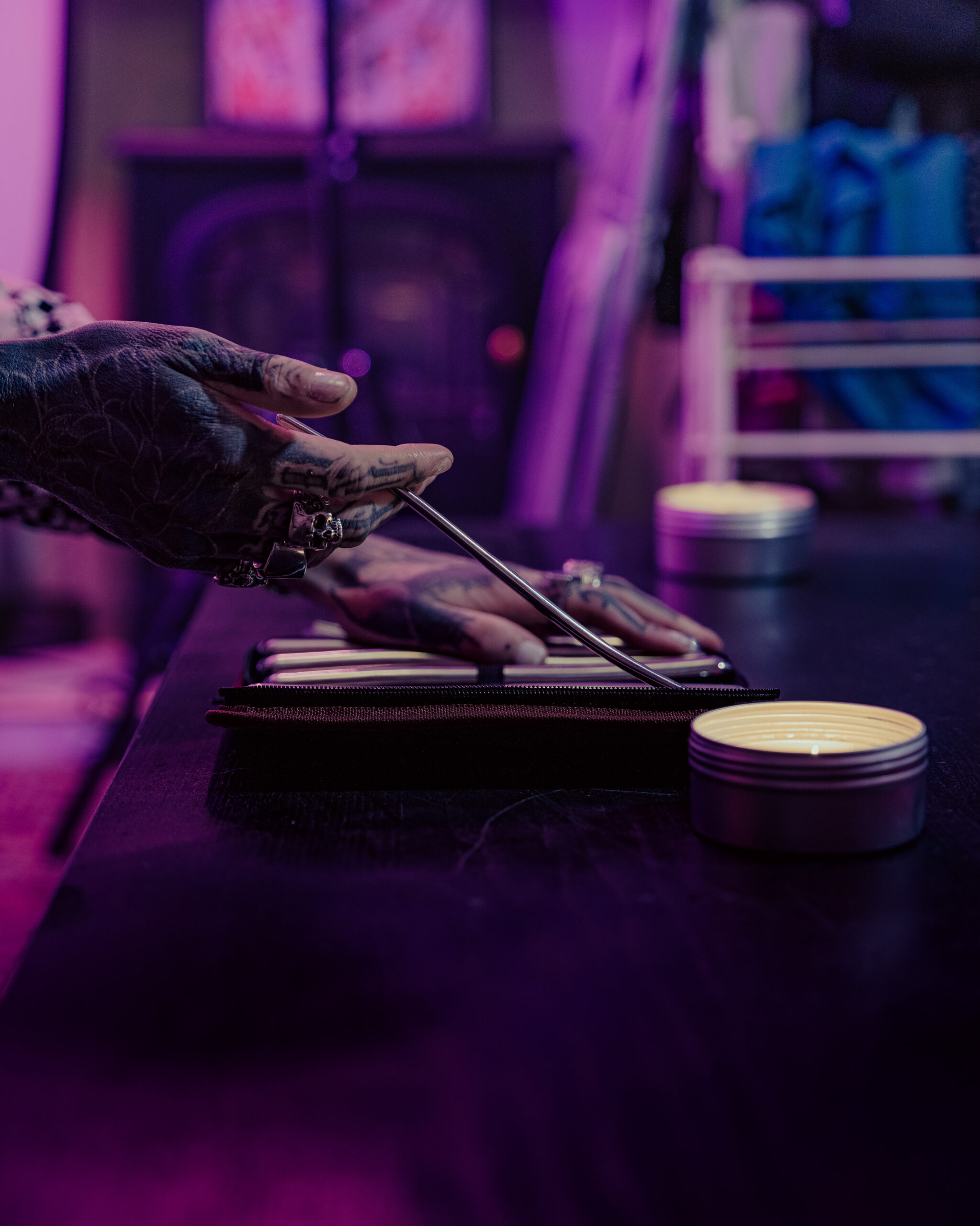The Psychology Behind Ghost Flirting
The phenomenon of ghost flirting has become increasingly prevalent in modern relationships, leaving many people wondering what drives individuals to engage in this behavior and why it’s so hard to shake off. At its core, ghost flirting is a form of emotional manipulation where one person suddenly ceases all communication with another, often leaving the recipient feeling confused, hurt, and unsure of their own emotions.
Interest vs. Infatuation
The phenomenon of ghost flirting has become increasingly prevalent in modern relationships, leaving many individuals wondering about its underlying psychological mechanisms.
In ghost flirting, one person initiates and maintains a romantic or flirtatious connection with another individual without reciprocating any emotional or physical advances. This paradoxical behavior can lead to feelings of excitement, uncertainty, and even obsession for the recipient. From a psychological perspective, ghost flirting can be attributed to the complexities of human attachment styles, social media’s influence on relationships, and the blurred lines between interest and infatuation.
Research suggests that individuals with insecure attachment styles, often stemming from past relationship trauma or neglect, may engage in ghost flirting as a way to validate their own self-worth. By maintaining a connection without reciprocation, they can temporarily alleviate feelings of rejection and low self-esteem. Additionally, social media platforms have created an environment where people can curate idealized versions of themselves and others, often leading to unrealistic expectations and the blurring of reality.
The distinction between interest and infatuation is also crucial in understanding ghost flirting. Interest implies a genuine desire for someone, whereas infatuation is characterized by an overwhelming passion that often overshadows rational consideration. Infatuation can lead individuals to invest excessive emotional energy in a relationship without fully considering the other person’s feelings or boundaries. In contrast, interest suggests a more balanced and nuanced approach, with both parties engaging in mutual communication and shared experiences.
Furthermore, ghost flirting can be seen as a form of “emotional labor,” where one person assumes all the emotional responsibility for maintaining the connection while the other remains passive. This dynamic can perpetuate feelings of frustration, anger, and resentment among those who feel exploited or ignored.
In conclusion, the phenomenon of ghost flirting offers insights into the complex interplay between psychological factors, social media, and relationship dynamics in modern relationships. By understanding the underlying mechanisms driving this behavior, individuals can better navigate their own emotions and develop healthier attitudes towards relationships built on mutual interest, respect, and communication.
Attraction to Intensity Over Connection
The rise of ghosting in modern relationships has sparked intense curiosity and debate about the psychological underpinnings behind this phenomenon. At its core, ghost flirting appears to be a complex mix of emotional avoidance, social anxiety, and an insatiable hunger for intensity in romantic connections.
Research suggests that individuals who engage in ghost flirting often struggle with forming and maintaining meaningful relationships due to deep-seated fears of intimacy and rejection. This can lead them to seek out intense, thrilling connections that provide a temporary escape from these emotions. In their pursuit of excitement, they may abandon potential partners without warning or closure, leaving the other person bewildered and hurt.

A key psychological driver behind ghost flirting is the tendency towards “avoidant attachment style,” where individuals prioritize independence and self-reliance over emotional closeness. This attachment style can make it difficult for them to form and maintain healthy, mutually satisfying relationships.
Another factor contributing to ghost flirting is the increasing prevalence of social media in our lives. The curated highlight reels of others’ romantic relationships on platforms like Instagram and Tinder can create unrealistic expectations about love and intimacy. This can lead people to feel like they’re missing out on authentic connections or that their own relationships aren’t exciting enough, prompting them to seek out intense but fleeting experiences.
Lastly, ghost flirting often stems from an unconscious desire for control in relationships. By withdrawing suddenly and without explanation, individuals may feel a sense of power over their partners and the situation. This can be particularly true for those who struggle with assertiveness or communication in their relationships, leading them to use ghosting as a coping mechanism.
The Benefits and Drawbacks of Ghost Flirting

Ghosting, also known as “ghost flirting,” has become an increasingly common phenomenon in modern relationships. This behavior involves one person showing interest in another, only to suddenly disappear or stop communicating without any explanation or closure. While some may view ghost flirting as a harmless way for people to test the waters or get over someone quickly, others may find it hurtful and confusing.
Benefits for the Ghoster
Ghost flirting has become a prominent phenomenon in modern relationships, where one person continues to interact with an ex without any intention of rekindling or committing to a relationship. While some may view ghosting as a harmless way to maintain a connection, others see it as a manipulative tactic used to keep someone invested while the ghoster pursues other interests.
For the ghoster, there are several benefits to this approach. Firstly, it allows them to maintain a sense of control over the relationship without actually having to put in any effort. By continually sending mixed signals and never fully committing, the ghoster can keep the other person engaged and invested, all while maintaining their own emotional distance.
Additionally, ghost flirting can be a great way for individuals to explore different interests and identities without having to worry about the consequences of a genuine relationship. It’s an outlet for experimentation and exploration, allowing the ghoster to test the waters without making any long-term commitments.
However, there are also some drawbacks to ghost flirting. The most significant concern is the emotional harm it can cause to the person being ghosted. Being repeatedly pursued by someone who has no intention of reciprocating emotions can lead to feelings of frustration, anger, and betrayal. This can have serious negative impacts on a person’s mental health and self-esteem.

Furthermore, ghost flirting can also be seen as a form of emotional manipulation, where the ghoster uses their power dynamics to keep the other person in a state of perpetual uncertainty. This can lead to feelings of anxiety, insecurity, and low self-worth in the person being ghosted.
Drawbacks for the Ghosted Person
Ghost flirting, also known as “ghosting” or “flakiest dating”, has become increasingly popular in modern relationships. On the surface, it may seem appealing to leave someone wondering if you’re still interested, but scratch beneath the surface and the true picture becomes more complex.
One of the main drawbacks for the ghosted person is the emotional distress caused by uncertainty and rejection. Not receiving a clear answer or explanation from the other party can lead to feelings of confusion, anxiety, and frustration. This lack of closure can be particularly hurtful if the ghosted person had invested significant time, emotions, or even physical intimacy into the relationship.
Another con for the ghosted individual is that it often lacks accountability. The person initiating the “ghosting” may feel no guilt or remorse for causing pain and discomfort, leading to an unhealthy dynamic in which one person holds all the power and control. This can also create a culture where people feel justified in engaging in this behavior, perpetuating a cycle of emotional manipulation.

Furthermore, ghost flirting can lead to feelings of inadequacy, low self-esteem, or even depression for the person being ghosted. The repeated rejection without any clear explanation can erode one’s confidence and make it difficult to form healthy relationships in the future.
On the other hand, some people may find the thrill of ghost flirting exciting or liberating, as they feel like they have the upper hand in the relationship. This can be particularly true for those who value independence or enjoy pushing boundaries in their romantic life. However, this approach often overlooks the emotional consequences for the other person and can lead to a lack of empathy or respect.

The Impact on Modern Relationships
The phenomenon of ghost flirting has become an increasingly common and confusing aspect of modern relationships. Gone are the days when men would directly express their interest or rejection, as today’s dating landscape is characterized by a mix of technology-facilitated communication and social anxiety-induced avoidance. The term “ghosting” refers to the act of suddenly ceasing all communication with someone, leaving them wondering about the intentions behind the abrupt disconnection. This phenomenon has given rise to a new form of flirting that is both fascinating and perplexing, as individuals engage in subtle, indirect, and sometimes confusing signals that can be misinterpreted or intentionally misleading.
Distorted Expectations
The advent of technology has given rise to a new phenomenon in modern relationships, where individuals engage in a behavior known as “ghost flirting.” This term refers to when someone sends flirtatious messages or advances on another person without expectation of reciprocation or further communication.
Ghost flirting can have both positive and negative impacts on individuals involved. On the one hand, it allows people to express their feelings and desires without fear of rejection or accountability. For those who are lonely or struggling with social anxiety, this can provide a sense of validation or connection. Additionally, ghost flirting can be a harmless way for people to explore their attractions in a low-risk environment.
However, the negative consequences of ghost flirting cannot be ignored. When someone is left without any response or resolution, they may feel confused, disappointed, and even hurt. This lack of closure can lead to feelings of frustration, anger, and resentment, potentially causing emotional distress or even triggering depression.
Furthermore, ghost flirting can also distort our understanding of relationships and communication. It creates unrealistic expectations about how interactions should unfold, where a clear exchange of emotions is expected to follow the initial advances. This expectation can be damaging, as it may lead individuals to over-invest in someone who is not interested or reciprocating their feelings.
Moreover, the rise of ghost flirting has also contributed to the normalization of casual and superficial relationships. With the constant stream of likes, messages, and connections on social media, people are more likely to engage in fleeting interactions without investing time or effort into building genuine connections. This can have far-reaching consequences for our mental health, self-esteem, and overall well-being.
Ultimately, understanding ghost flirting is crucial in recognizing the complexities of modern relationships. It highlights the need for clear communication, empathy, and respect in interactions with others. By acknowledging the potential pitfalls of ghost flirting, we can work towards creating healthier and more meaningful connections with those around us.
Challenges for Healthy Communication
The rise of social media and dating apps has led to an increase in “ghost flirting,” where individuals initiate conversations with others online, only to suddenly stop responding or disappear altogether. This phenomenon has significant implications for modern relationships, as it can be both intriguing and distressing.
One of the primary challenges of ghost flirting is the blurred lines between friendship and romance. When someone starts sending flirtatious messages or making romantic overtures online, it can create a false sense of intimacy and expectation. This can lead to feelings of confusion and uncertainty for those on the receiving end, as they try to decipher whether their interactions are genuine or merely a game.
Another challenge is the lack of nonverbal cues in online communication, which can make it difficult to gauge the other person’s intentions and emotions. In-person interactions allow for subtle facial expressions, body language, and tone of voice to convey interest and attraction. Online, these cues are absent, leading to misunderstandings and misinterpretations.
Furthermore, ghost flirting often involves a sense of power imbalance, as the initiating individual may have more control over the conversation and its trajectory. This can lead to feelings of manipulation and exploitation, particularly if the other person becomes emotionally invested in the interaction only to be suddenly discarded.
Lastly, the phenomenon of ghost flirting raises questions about authenticity and accountability in online relationships. As social media platforms become increasingly popular means of meeting new people, it’s essential for individuals to prioritize genuine connections over fleeting online flings. By fostering healthier communication habits and setting clear boundaries, we can mitigate the negative effects of ghost flirting and cultivate more meaningful, satisfying relationships.
Relax with calming products from Peaches and Screams Discover spreader bars for greater control and excitement at Peaches and Screams Discover Cobeco products for unique and high-performance toys at Peaches and Screams Shop premium male condoms at Peaches and Screams Buy hollow butt plugs for unique sensations at Peaches and Screams
Gifted Brits My Mental Health Rocks Cotswold House Hotel BeyBey Name
- Skin Pen Microneedling Near Walton On The Hill, Surrey - January 4, 2025
- Traptox Aka Trapezius Botox Treatment Near West End, Surrey - January 4, 2025
- Skin Pen Microneedling Near Forest Green, Surrey - January 2, 2025
